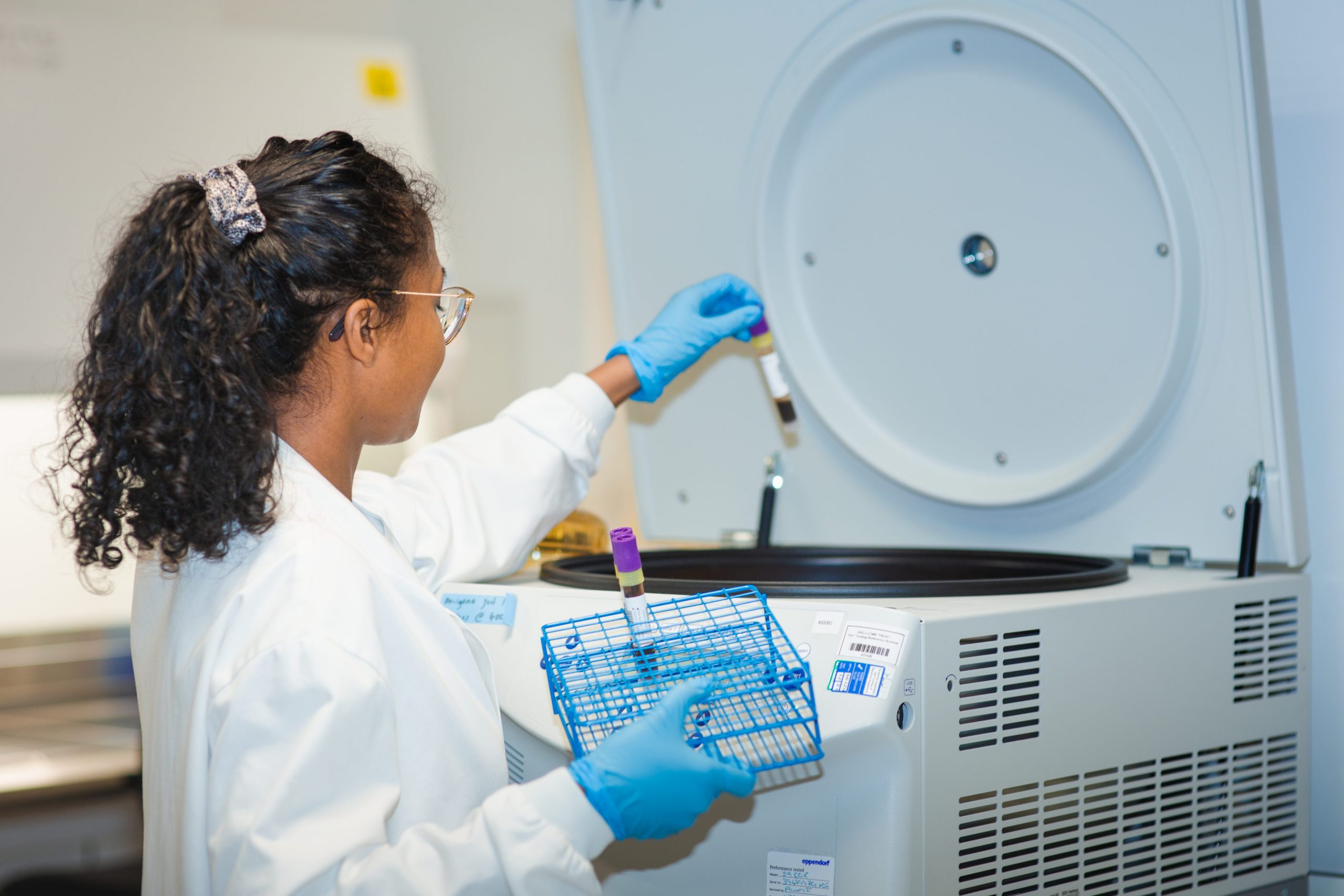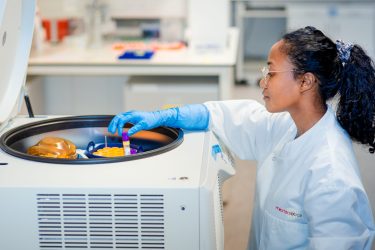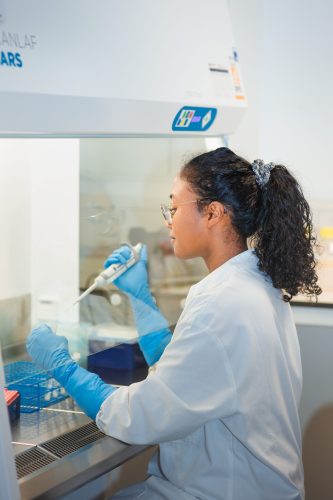Microbiotica: transforming medicine with microbiome magic
Posted: 24 October 2023 | Taylor Mixides (Drug Target Review) | No comments yet
In this interview, Anne Neville, Director at Microbiotica, elaborates on the significance of the Microbiotica Culture Collection (MCC) and Microbiotica Reference Genome Database (MRGD), which are fundamental to the development of live biotherapeutic medicines.

Live Bacterial Products (LBPs) will provide patients with a desirable, credible, safe and effective treatment option.
The human microbiome, a complex ecosystem of microorganisms residing within our bodies, has emerged as a promising frontier in the quest for innovative medical treatments. Microbiotica, a pioneering company that has developed a Discovery Platform that has paved the way for the creation of Live Bacterial Products (LBPs).
These LBPs, which comprise therapeutic strains of bacteria, offering patients a desirable, credible, safe, and effective option with minimal side effects.
Their most promising developments: MB310, a therapeutic approach for ulcerative colitis, and MB097, designed to enhance the effectiveness of immune checkpoint inhibitors in cancer treatment. Microbiotica’s approach differs from traditional pharmaceutical development, offering unique advantages in the field of precision medicine.

How did Microbiotica leverage its founding advances from the Sanger Institute to address barriers in translating the human microbiome, and what is its ultimate goal in the field of microbiome therapeutics?
Microbiotica was spun-out of Trevor Lawley’s lab at the Sanger Institute in late 2016. The Lawley Lab team had pioneered culturing of the human gut microbiota and had developed new analytical approaches for efficient microbiome profiling. At Microbiotica we have adopted, adapted and industrialised these founding ideas to generate a Discovery Platform suitable for scale-up and application in industry. We have since leveraged our Platform to develop two candidate drugs; MB310 for treatment of ulcerative colitis and MB097 which is intended for use alongside immune-checkpoint inhibitors (ICIs) in melanoma patients to boost their responsiveness to the ICIs.
Ultimately, we hope and intend that microbiome therapeutics such as our strain consortium based Live Bacterial Products (LBPs) will provide patients with a desirable, credible, safe and effective treatment option that will be well tolerated with few, if any, serious side-effects. We also believe that drug development teams should routinely consider the potential modifying effect of the gut microbiome on drug potency and factor it into assessments of PK and PD.
Could you explain the significance of Microbiotica’s Microbiotica Culture Collection (MCC) and Microbiotica Reference Genome Database (MRGD) in the development of live biotherapeutic medicines?
The Microbiotica Culture Collection (MCC) and the Microbiotica Reference Genome Database (MGRD) are integral components of Microbiotica’s Discovery Platform. The MCC is a phylogenetically diverse culture collection that includes pure cultures of thousands of bacterial strains that we have isolated from humans around the world and it is the source of the therapeutic strains that are included in our LBPs. It boasts considerable breadth, depth, and taxonomic novelty, which means that we have access to species that were, to the best of our knowledge, completely undescribed until now and which we therefore consider new to biology. There is no literature out there for these species and strains – it’s up to us to characterise them!

We generate reference genome sequences for each of the purified strains in the MCC and we these add these to the MRGD, which also includes publicly available reference genomes and metagenome assembled genomes (MAGs). In this way, we can ensure that the MRGD is populated with genome sequences that represent the species and strains that exist in the populations and cohorts that we wish to study. Because we use the MRGD during taxonomic classification of microbiomes, it is very important to us that it is specially tailored to the individuals being studied. This allows us to maximise the read classification rate and to do so with very high accuracy and precision. We rely on the high-resolution microbiome profiles generated with our discovery platform to derive the signatures that form the basis of our LBPs and biomarkers, so we consider the MCC and MRGD to be valuable platform assets.
What is the specific focus of the drug that Microbiotica is advancing for the treatment of ulcerative colitis, and how does it leverage microbiome science to address this medical condition?
MB310 is a consortium of nine bacterial species for treatment of mild to moderate ulcerative colitis. We identified these species as being important for treatment of UC by generating and analysing metagenomics data from a Faecal Microbiota Transplant (FMT) trial that was undertaken at the University of Adelaide. In that study, patients received FMT with either their own stool or with pooled donor stool, and the primary outcome was steroid-free remission at week eight. FMT with pooled donor stool was the more efficacious treatment, with 32 percent of patients on that arm of the study meeting the primary endpoint.
In addition to analysing metagenomics data, we also isolated bacteria from the healthy donor stool banked as part of that trial. This meant that we had access to the exact strains that engrafted in FMT recipients who responded well to treatment so that we could study them alongside others to select the best performing strains with the most favourable phenotypes for inclusion in our LBP.
We now know that the MB310 consortium has a multi-factorial mechanism of action that restores at least two key cellular pathologies relevant to UC; healing of the epithelial barrier and reestablishment of immunotolerance in the gut. As living organisms, the strains in MB310 may exert their beneficial effects on human physiology in a variety of ways. Each strain may have more than one mechanism of action and these may complement each other or work synergistically. It is likely the combination of these mechanisms of action that will make MB310 an effective therapeutic.
Could you elaborate on the drug being developed by Microbiotica to stimulate cancer patients to respond favourably to immune checkpoint inhibitor therapy? How does it work and what are the potential benefits?
MB097, our drug with immune-oncology applications, is a consortium of nine bacterial strains. It has been designed to work synergistically with immune checkpoint inhibitors, such as PD(L)1 inhibitors, to prevent tumour growth and increase survival in patients with melanoma. While ICI treatment alone can be quite efficacious, only a subset of patients respond to this treatment and there is evidence in the literature that gut microbiome composition influences this. In addition to our LBP, we have also identified a gut microbiome signature that serves as a biomarker predictive of patient response to ICIs. We envisage that this biomarker will indicate whether a patient is at risk of not responding to ICI drugs. Under those circumstances, we would then advise the patient to take our LBP, to convert their status from non-responder to responder. In this way, we expect that more patients will be able to benefit from the ICI drugs. As for MB310, the strains in MB097 have pleiotropic effects on the host and the strains have been demonstrated to have complementary and synergistic mechanisms of action.
How does Microbiotica’s approach differ from traditional pharmaceutical development, considering that their drugs are made from therapeutic strains of bacteria rather than traditional chemical compounds? What advantages does this offer in the field of precision medicine?
As a biotech company, Microbiotica has leaned into harnessing and leveraging the natural biology of host-microbe interactions to treat human disease. Our drug active components are unmodified, (though well characterised), wild-type strains of living bacteria that we have isolated from humans and that we return to humans lyophilised in a capsule. Once rehydrated in the gut, the strains are expected to behave exactly as nature intended. We therefore believe that these drugs will be generally well tolerated and will not be associated with severe side-effects. Another difference is that LBPs are a non-traditional, self-replicating, living drug product. When introduced into another ecosystem the strains in our LBP are subject to cooperation, competition and antagonism from other microorganisms and the host, which means that the pharmacokinetics and pharmacodynamics of the drug are somewhat more dynamic than might be expected for traditional pharmaceuticals.
When introduced into another ecosystem the strains in our LBP are subject to cooperation, competition and antagonism from other microorganisms and the host.
In terms of precision medicine, Microbiotica’s approach of identifying microbiome signatures associated with favourable outcomes in clinical trials studying defined patient populations, means that we can precisely target the same populations with our LBPs.
About the author
 Anne Neville
Anne Neville
Director of Discovery Microbiology, Microbiotica
Anne Neville is Director Discovery Microbiology at Microbiotica, having joined the company in May 2017, soon after its formation. In this role, she leads the team specialising in microbial cultivation and the application of genomics techniques to the human gut microbiota.
Before joining Microbiotica, Anne undertook post-doctoral research at the Wellcome Sanger Institute, Cambridge (UK) and at the Institut Pasteur, Paris (France), where she studied the role of commensal and probiotic bacteria on infections caused by pathogens including C. difficile and C. albicans. Anne has a BSc in Genetics and a PhD in Microbiology from University College Cork, (Ireland).
Related topics
Drug Targets, Genome Editing, Genomics, Microbiome
Related conditions
gut bacteria
Related organisations
Microbiotica
Related people
Anne Neville (Microbiotica)







